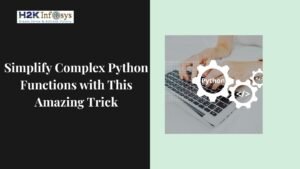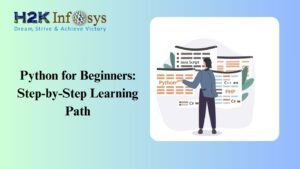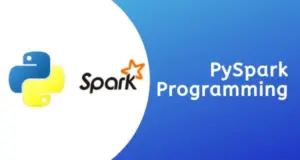Particularly in data science, Python Skills is one of the most in-demand programming languages worldwide. Python was ranked third on the list of technologies developers desire to learn and fourth on the list of most popular technologies in Stack Overflow’s 2022 Developer Survey. After all, Python provides programmers with a vast array of tools, frameworks, and libraries for a variety of applications both within and outside the data science community.
Python is one of the most important technologies in the field, so businesses require developers who are proficient in it to improve their data insights (and beyond). They achieve this either by working with outsourcing companies to assist with their Python programming needs, or by recruiting traditional in-house permanent engineers.
However, before businesses begin their Python-focused hiring journey and before developers begin applying for these positions, all parties must be aware of the most crucial Python abilities that data science developers must unquestionably possess. Check out the Learn Python course to learn more.
The Top 10 Python-Based Data Science Skills
Python, one of the most widely used programming languages for data science, is a very useful resource with many applications in the industry. Devs must comprehend not only Python as a language, but also its frameworks, tools, and other skills relevant to the industry in order to be successful.
1.Python Skills fundamentals
The primary task of a data scientist is to analyse data to uncover practical insights that may be applied to a variety of commercial, research, and other situations. Each step of this process calls for a sizable amount of programming knowledge in Python. Data scientists must therefore possess a firm grasp of the foundations of Python programming in order to build the most effective code for their work and to comprehend the codebases of other developers or team members.
Some of the foundations of programming Python Skills that data scientists need to grasp are as follows:
- Data formats: There are numerous built-in data types available in Python, such as floats, integers, and strings. Developers need to be aware of the distinctions between each and when to use them.
- Operators: Developers can execute customised operations on one or more commands using Python’s special operational symbols. Addition (+), subtraction (-), and multiplication (*) are some of these operators.
- Variables: Variables in Python enable programmers to store values. The equal symbol (=) is also used to construct variables by giving them a value.
- Lists: Lists are arranged groupings of objects that help store information that must be accessed in a specific sequence. For storing several objects of the same data type, developers can also utilise lists.
- Dictionaries: In Python, a dictionary is a group of key-value pairs. They are helpful for storing data that needs a special key to access.
- Functions: A function is a piece of code that executes a single task and can only be used once within a single program. The definition and use of functions are essential to Python programming.
- Control structures: These are the code blocks that control how other code blocks are executed. When discussing control structures, the terms “if statements,” “for loops,” and “while loops” come to mind.
- Packages and modules: A package is a group of modules, and a module is a file containing Python code. When writing longer and more complicated Python applications, developers must understand how to import and use modules and packages.
2.Data manipulation and analysis
To make sure that the data is prepared for analysis and modelling, data scientists invest a lot of effort in preparation and manipulation. Therefore, having the ability to work with Python to clean and prepare data, including various data kinds and sizes, is crucial.
A data scientist must be proficient in Python in order to analyse datasets of all sorts and sizes effectively. Additionally, data scientists must be able to manipulate huge datasets using PySpark and, when appropriate, leverage libraries for various data kinds including photos, text, and audio.
3.Data visualization
Data visualisation is a crucial part of data science that aids in exploration, understanding, pattern recognition, and the efficient dissemination of findings to a variety of audiences. To effectively use data visualisation technologies, data scientists must possess practical knowledge and abilities. Matplotlib is a popular library for making static, animated, and interactive visualisations with an easy-to-use interface for producing statistical visuals. It is one of the many libraries and tools for data visualisation available in Python. Statistical visualisations may be produced using a more streamlined interface thanks to Seaborn, which is developed on top of Matplotlib. Devs also have a wide range of alternative choices, such as Plotly, Bokeh, Altair, and Vega.
4.Data storage and retrieval
For data scientists who work with vast amounts of data, effective data storage and retrieval abilities are crucial. Depending on their objectives and the types of data they are keeping and retrieving, data scientists need to be familiar with a variety of storage and retrieval techniques.
Data can be stored and retrieved in Python in a number of different ways. Common strategies include relational databases, NoSQL databases, flat files, CSV files, JSON files, and cloud storage services. Relational databases are robust platforms for storing structured data and supporting SQL queries. Large volumes of data can be stored in the cloud using scalable alternatives offered by cloud storage services like Amazon S3, Google Cloud Storage, and Microsoft Azure Storage. To access these services, Python offers modules like boto3 and google-cloud-storage.
5.pandas
The pandas package is an essential resource for Python-using data scientists and analysts. It is an open-source Python toolkit that makes it possible to explore, clean up, and analyse tabular data. Pandas use quick, adaptable, and expressive data structures that are easy to use and intuitive when working with relational or labelled data. One of the key libraries for every workflow in data science is pandas, which enables data processing, wrangling, and munging.
6.NumPy
A Python package called NumPy makes it possible to manipulate large-dimension arrays using mathematical operations. It provides a range of linear algebra, metrics, and array manipulation techniques. By allowing the vectorization of mathematical operations on NumPy arrays, NumPy, also known as Numerical Python, improves performance and accelerates execution. Large multidimensional arrays and matrices can be easily worked with using the library, enabling effective data analysis and manipulation.
7.Artificial intelligence and machine learning
Any type of data scientist needs to have a solid understanding of machine learning and artificial intelligence. Machine learning algorithms are designed to build systems that can automatically learn from data patterns. Given that Python is the language of choice for data science, mastering it is absolutely essential to working with machine learning algorithms efficiently.
8.Deep learning
A key element of data science is deep learning, which uses artificial neural networks to extract more complex information from data by processing it through several layers. Python is crucial in this area because it provides a wide selection of potent libraries and tools, such as TensorFlow and PyTorch, that let programmers create and train deep learning models.
9.Web frameworks
Developers who want to use their Python expertise to successfully build and deploy online apps must have a firm grasp of web frameworks. Flask and Django are the two frameworks that Python programmers use the most frequently. A high-level web framework called Django offers a number of modules to help with the production of high-quality online programs without having to start from scratch. It places a priority on clean, quick, and pragmatic design. In that it is a micro-framework that is independent of any specific tools or libraries, Flask is the antithesis of Django. A database extraction layer, form validation, or any other typical features offered by third-party libraries are not included. It is yet regarded as a template engine with unique modules and libraries. This eliminates the requirement for writing low-level code and enables developers to design web apps. These two frameworks are incredibly flexible and let programmers utilise Python to build useful web applications. Developers can concentrate on producing high-quality code without becoming mired down in low-level details by utilising the tools and libraries contained in these frameworks.
10.Front-end technologies
Python developers need to have a firm grasp of front-end technologies in order to create web applications that will be useful for data science projects. Three main front-end markup languages are needed for this: HTML, JavaScript, and CSS. Python’s compilers, parsers, and transpilers can produce all three markup languages. To make the most of their Python knowledge, developers must hone their abilities in these front-end technologies. A web page’s basic structure is built using HTML, layouts and content are styled using CSS, and JavaScript adds interaction and dynamic behaviour. Python developers ensure that their apps and data science projects are not only effective but also aesthetically pleasing by acquiring abilities in all three.
Conclusion
Data science is a rapidly expanding subject of technology. The need for Python developers will only continue to rise as this specialty becomes more and more well-known. Due to the difficulty of the existing tech hiring process and the present worldwide talent shortage, Python development outsourcing providers will only become more valuable. You can enroll at the Online Python course to learn more.




























